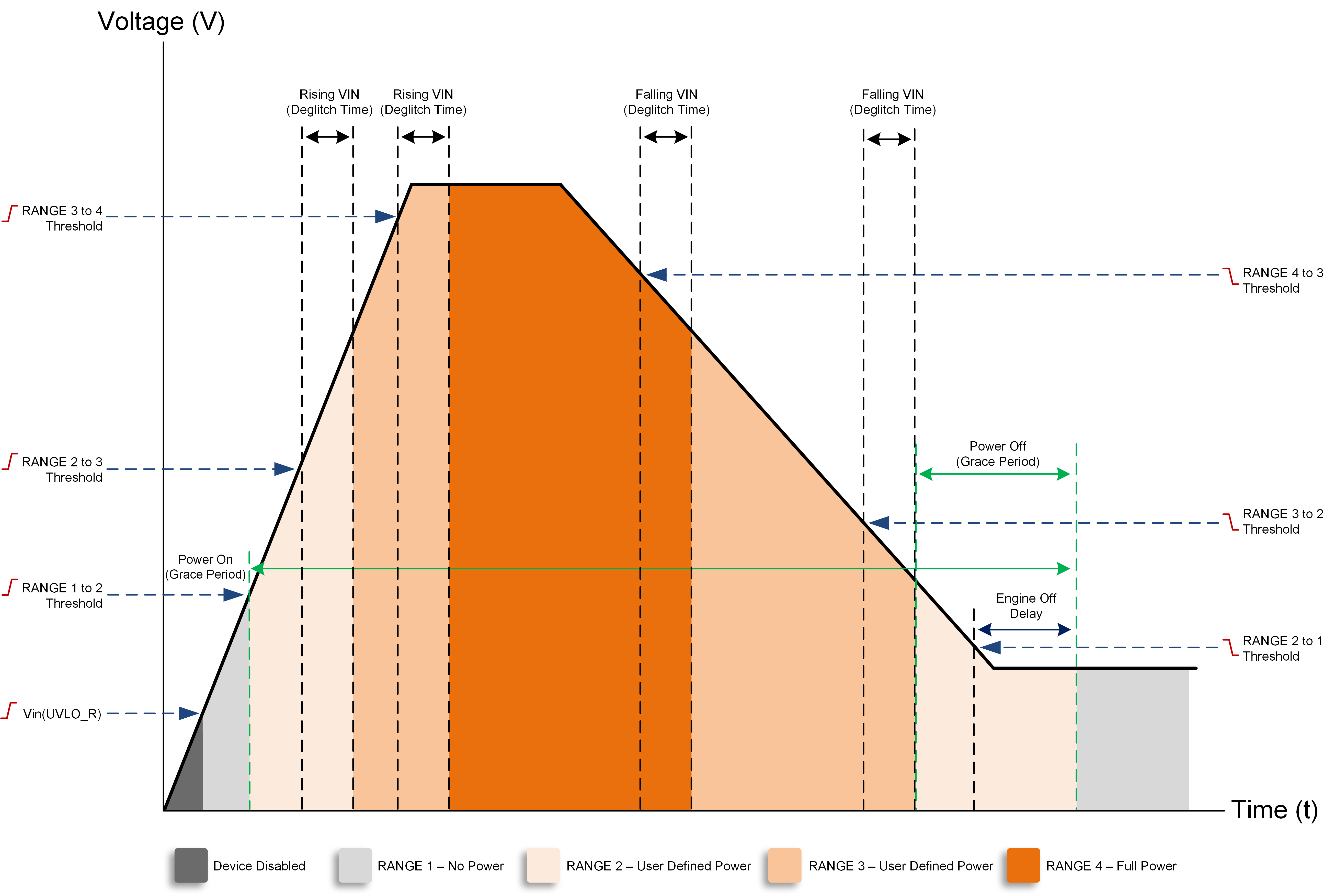SLVUBX5C December 2022 – August 2024 TPS25762-Q1 , TPS25763-Q1 , TPS25772-Q1
4.3 VIN Engine On or Off
VIN Engine On or Off power level parameters are configurable in this page.
The TPS2576x-Q1 and TPS257x-Q1 family's SPM supports autonomous power transition dependent upon the VIN (for example, VBATT) voltage level per the diagram shown in Figure 4-2.
 Figure 4-2 Engine On/Off Controls and
Power Mode Operation (TPS257xxD-Q1)
Figure 4-2 Engine On/Off Controls and
Power Mode Operation (TPS257xxD-Q1)The Engine On/Off voltage thresholds must be configured in sequential order (highest to lowest): RANGE 3 to 4 (rising) > RANGE 4 to 3 (falling) > RANGE 2 to 3 (rising) > RANGE 3 to 2 (falling) > RANGE 1 to 2 (rising) > RANGE 2 to 1 (falling).
Maximum power for the low-power range is a configurable total port power output. Program maximum power relative to total VBUS power.
Dual port example:
- Total USB VBUS Power = 100W
- VBUS Port A maximum power = 60W and VBUS Port B maximum power = 60W
- VBUS Port A minimum power = 15W and VBUS Port B minimum power = 15W
- Maximum power for low power =
30W:
- Once the VIN level falls below the RANGE 4 to 3 (falling) setpoint, the total USB VBUS power is reduced to 30W total for all ports.
VIN Engine On or Off is one of the SPM engine's power foldback policies. For more information regarding SPM, see the TPS257xx-Q1 System Power Management.